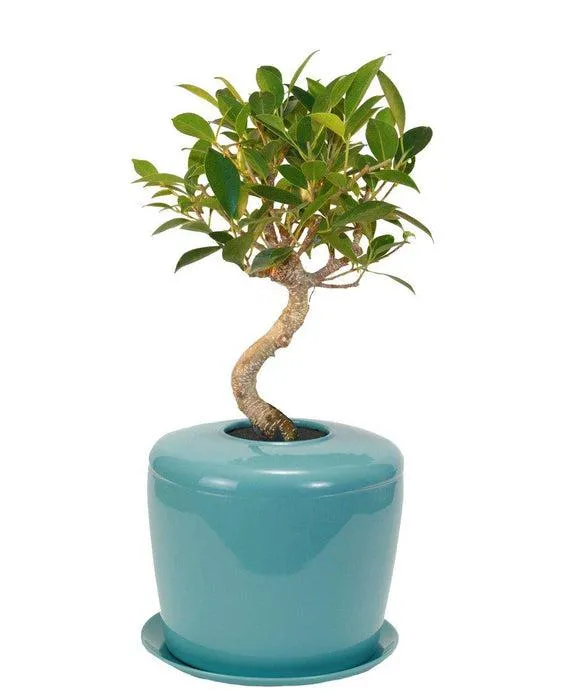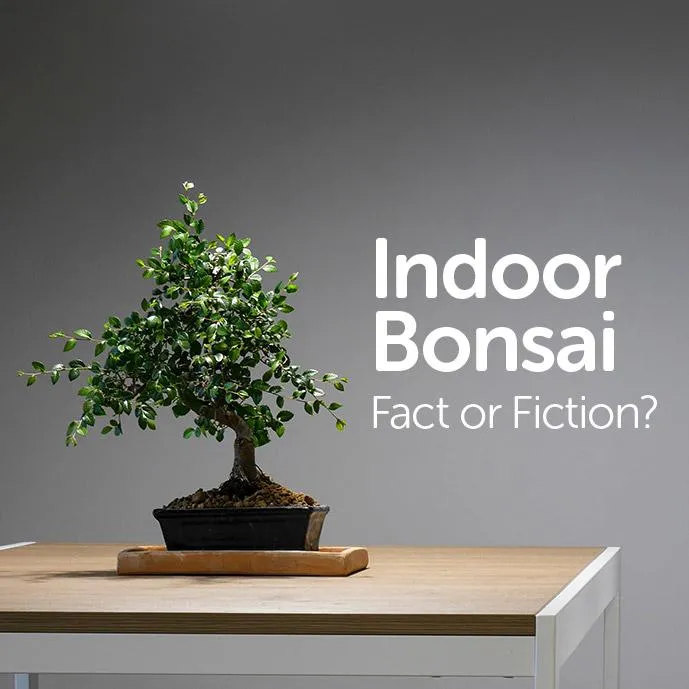The Best Small Trees for Growing Indoors
If you’re looking to add a bit of greenery to your home but don’t have a large outdoor space, small indoor trees are a great option. They can provide visual interest and a sense of nature without requiring much room. As someone who has grown several varieties of bonsai and small potted trees over the years, here are some top picks for easy-to-care-for miniature trees you can keep inside.
Jade Plant
A popular and versatile choice is the jade plant. Known by its botanical name Crassula ovata, this evergreen shrub grows slowly to a maximum height of around 3 feet but will stay much smaller if kept potted. Its waxy oval leaves come in various colors from green to reddish-pink. Jade plants are extremely tough and tolerant of low light. They’re practically impossible to overwater as well. I’ve found that jade thrives on bright indirect light and infrequent watering. Its trailing branches give it an artistic Bonsai-like appeal indoors.
Dwarf Umbrella Tree
The dwarf umbrella tree or Schefflera arboricola makes an excellent small indoor tree. Unlike its larger umbrella tree cousins, this variety tops out at just 3-4 feet tall. Its spiraling branches are clad with compound leaves resembling those of rhubarb. Under medium light, the dwarf umbrella tree grows slowly into a pleasing mound shape. It prefers moderately moist soil and tolerates low light well. In my experience, this tree is very forgiving of occasional neglect.
Corn Plant
Also called the dracaena, the corn plant appeals with its straight stalks and strap-like leaves. Variegated varieties feature cream or yellow streaks that brighten up any room. Dwarf corn plants stay under 4 feet tall. They thrive in bright, indirect light and average home temperatures. Their narrow, upright form makes them a good choice for placing on tables or in tightly spaced areas. I’ve found corn plants to be extremely drought tolerant – you can let the soil dry out between waterings.
Jelly Palm
With its fat, shiny leaves resembling globs of jam, the jelly palm or butia capitata is undeniably eye-catching. This slow-growing palm tree reaches 2-3 feet in height. Its leaves emerge in tightly packed rosettes that give the plant a full, rounded habit ideal for small spaces. Jelly palms prefer lots of sun but can tolerate lower light levels too. Allow the soil to dry out slightly between waterings. In my experience, its cute jellybean leaves lend a fun, tropical flair indoors.

Dwarf Date Palm
If you want a true miniature palm tree, choose a Phoenix roebelenii, commonly called the dwarf date palm. These stay under 5 feet tall with a single, slender trunk capped with a crown of feather-like fronds. Dwarf date palms love direct sun but will make do in medium light as well. Water whenever the top inch of soil becomes dry. I find that these provide a sense of exotic look indoors out of proportion to their compact size.
Bonsai Trees
Of course, bonsai trees deserve their own category. True bonsai cultivars include Chinese elm, Japanese maple, juniper, and ficus. With the right care and periodic pruning/shaping, they can live for decades in a container. Growing bonsai from seed or cuttings is an artform that develops patience! Purchasing starter trees gives you instant gratification. Place bonsai in indirect light and water whenever the soil becomes surface dry. From my experience, caring for bonsai fosters an appreciation for nature in miniature.
Choosing the Right Pot and Spot
In addition to selecting the right indoor tree variety based on size and care needs, here are some other factors to consider:
- Pots: Terra cotta, glazed ceramic, and plastic all work well. Choose containers 1-2 inches larger than the root ball.
- Drainage: Drill drainage holes if your container doesn’t have any. This prevents root rot.
- Soil: Ordinary potting soil mixes work fine. You can add perlite or gravel to the bottom of the pot for better drainage.
- Location: Pick a spot with indirect sunlight, away from hot vents or cold drafts. Rotate the tree periodically for even growth.
- Temperature: Most houseplants prefer average room temperatures between 65-80°F.
- Humidity: Some trees like higher humidity levels, so consider a pebble tray or wall-mounted humidifier.
By choosing the right variety, container, and growing conditions, your small indoor tree will thrive for years to come! Trees have even been shown to improve air quality and boost mental wellbeing. Having lush greenery under a roof definitely makes winter feel a bit less harsh, y’know?
Common Problems and Care Tips
No tree is completely problem-free, but with proper attention you can prevent or overcome many issues that affect indoor trees. Here are some things to watch out for along with remedies from my experience:

Overwatering
Excess water is one sure way to stunt growth or cause root rot. Feel the soil before watering and let it dry out slightly between waterings. Terra cotta pots are less prone to soggy soil issues.
Underwatering
Dry soil spells dehydration. If leaves start to yellow or drop, increase water until the drainage holes run clear again. Stick your finger in to check moisture levels.
Pests
Mealybugs, scale, and spider mites can infest houseplants. Regular checks allow early detection before serious damage. Spraying neem oil or wiping leaves with isopropyl alcohol has controlled mild cases in my care.
Poor Growth
Too little light is a common culprit. Move trees to a sunnier spot and periodically rotate them for even exposure. Fertilizing in spring and summer with a dilute solution tailored for houseplants perks up growth.
Brown Tips
Browned or crispy leaf edges indicate hard water deposits, over-fertilizing, or dry air. Use distilled water for watering and mist leaves to boost humidity around 50%. Flush salts from the soil occasionally too.

With some TLC, your indoor tree should reward you with lush greenery for many months ahead. Hopefully these tips help you choose and care for a tree that brings joy to your home. Let me know if any other questions come up!
Top Small Trees for Indoor Growing
| Tree | Mature Height | Light Requirements | Care Instructions |
|---|---|---|---|
| Jade Plant | 1-2 feet | Bright indirect light | Water weekly, enjoys lower humidity |
| Dwarf Umbrella Tree | 3-4 feet | Medium indirect light | Water when top inch of soil dries, tolerates low light |
| Chinese Evergreen | 2-4 feet | Medium indirect light | Keep soil slightly moist, likes humidity |
| Snake Plant | 2-3 feet | Low indirect light | Water every 2-4 weeks, very drought tolerant |
| Ponytail Palm | 3-6 feet | Medium indirect light | Water weekly, allow top inch of soil to dry |
FAQ
-
What types of small trees can grow indoors?
There are basically a few different kinds of small trees that do well inside. Peace lilies and dwarf date palms are sort of low maintenance and will kind of survive in low light. Bonsai trees also tend to stay on the short side and can be fun to shape. Chinese evergreens and dwarf citrus like Meyer lemons are possibly the easiest though.
-
How much light do indoor trees need?
Most indoor trees need at least medium light to flourish. Amazingly enough, trees that get strong sunlight will develop more branches and leafy growth. At the same time, really low-light areas won’t cut it except for a few super tough varieties. The amount of actual hours of direct sun kinda varies by species, so check light requirements for whatever type you choose.
-
What soil is best for indoor trees?
You’ll want a soil made for houseplants rather than standard potting soil. Houseplant potting mixes have good drainage to prevent roots from sitting in water too long. Peat moss or coir fibers help retain moisture without getting soggy. Perlite is also commonly added to improve aeration. Ultimately, the soil needs to dry out somewhat between waterings to keep roots healthy – unlike outdoors where rain takes care of that.
-
How often should indoor trees be watered?
Watering frequency depends a lot on the tree type, pot size, and indoor conditions. As a general guideline though, check the soil moisture level by sticking your finger an inch or two down. When it’s dry, it’s time to water thoroughly until draining from the bottom. Observe your tree’s appearance too – wilted or less shiny leaves may mean it’s thirsty. On the contrary, soggy soil is never good for roots.

-
Is pruning needed for indoor trees?
Occasionally pruning indoor trees helps them look full and balanced. However, overpruning can cause stress, so go slow. Mostly just remove any damaged, diseased, or crowded branches. Right after flowering is usually the best time. Always sterilize shears between cuts. Proper pruning encourages compact shape and continued flowering over the years.
-
How can I keep my indoor tree healthy?
Aside from watering and pruning properly, give your tree as bright a spot as you can. Rotate it occasionally for even growth. Fertilize in the growing season – weaker doses are better than risking burn. Watch for pests like scale or mealybugs, and treat as needed. Clean leaves regularly to prevent asthma issues too. With a little TLC, your tree should provide years of natural beauty inside.
